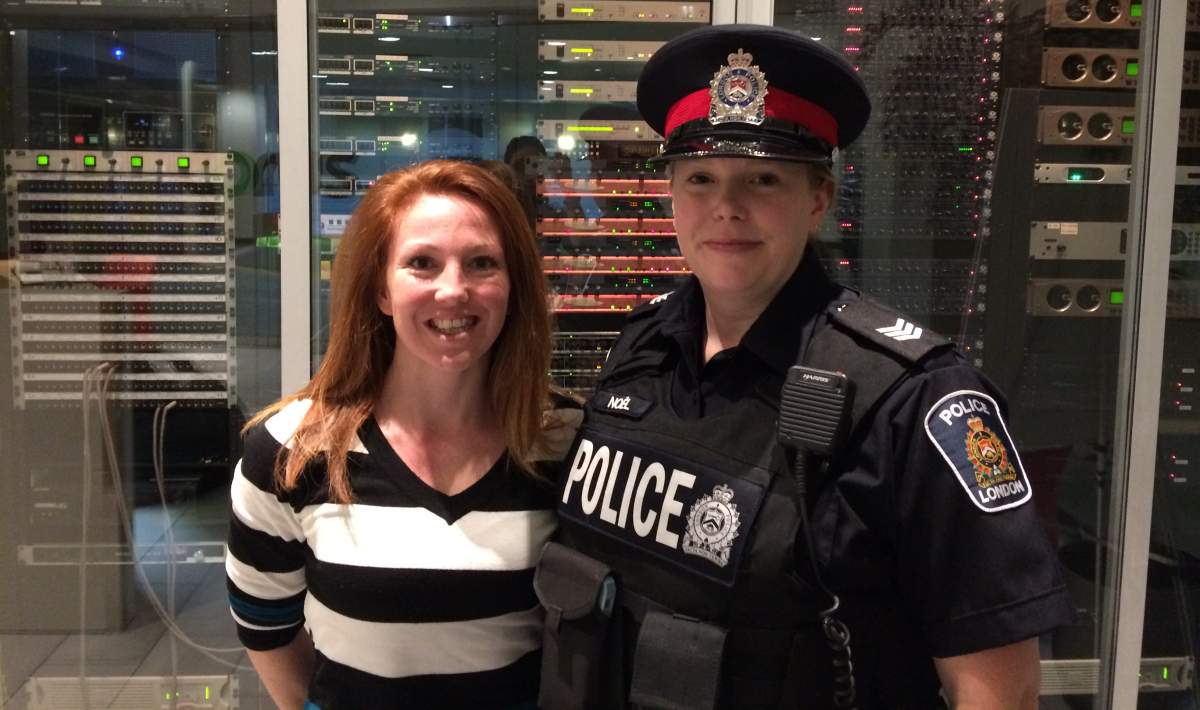It all came flooding back to London police patrol sergeant Jennifer Noël, while holding the newborn baby of a family member.

“It hit me all at once,” she said. “I didn’t want to be alone with it, I didn’t want to hold it, I was like ‘take your baby back.'”
She had worked on three different and difficult cases involving children — one a homicide, another an attempted homicide — during her last year conducting polygraph interviews for the London police service’s major crimes unit, after which Noël doesn’t remember feeling sad at all. Instead, she felt numb.
“I could just go interview people about horrible things, and then go have lunch and go home.”
Things changed when she held a new baby born to a family member.
“People expect you to be strong, but it can be any little thing that may trigger you later. So for me, that was like a month later that I held this little baby, but then my mind starts to go back to three different calls that I went to involving babies.”
This is why the London Police Service has a peer support group. While the Critical Incident Stress Management program exists as a more formal process to debrief officers after difficult calls, the peer support group is an informal network of 30 members, uniform and civilian, who act as friendly ear and are available when someone is triggered later down the road.

Get weekly health news
“It’s great to support people after the big calls, after the trauma, but know that … this can come up at any time, for seemingly no reason at all.”
Noël was able to reach out to someone else who had worked through the same calls. But the peer support group also gives officers and civilians a set group of people they can reach out to, or who may reach out to them just to check in.
“There’s so much confidential stuff that we’re dealing with. You can’t necessarily go home and talk to your family and friends about it,” explained Sonya Juffermans, a civilian in major case management.
Juffermans says the peer support group deals with a broad scope of issues, from the cumulative stress of attending multiple fatal car crashes to changes at home that may impact a person’s ability to work.
Both Juffermans and Noël are part of the group themselves. Information shared during a meeting is confidential, and the only thing documented is the number of interactions that take place each month. Although those numbers are confidential too, Noël said she averages between six and 10 interactions per month.
“It’s not formal counselling or anything like that. While we do have some training on how to speak to people, it’s mostly about listening as a friend and making some referrals if you think that person may benefit from some further support,” Noël said.
Members of the London Police Service have long been peer supporting each other, but Juffermans said the group formally launched in January 2015 after an in-depth training session.
Since then, she’s become more aware of the signs someone might not be okay.
In addition, members of the service use colours to discuss their well-being. Green is used to describe feeling positive, yellow is used to describe someone with minor stressors, orange is used to describe some concerning behaviour, and red is when someone has diagnosable behaviours like self-harm or alcoholism.
“It’s much easier to say, ‘I’m in the orange today Sarg, I had a bad night and I’m not okay,'” Noël explained.
“It’s healthy to have negative reactions when something horrible happens, but you need to be able to cope with that.”
“The idea is that it’s a continuum. We can always get back to the green … We might have a reaction and get into the red, but we can come back.”











Comments